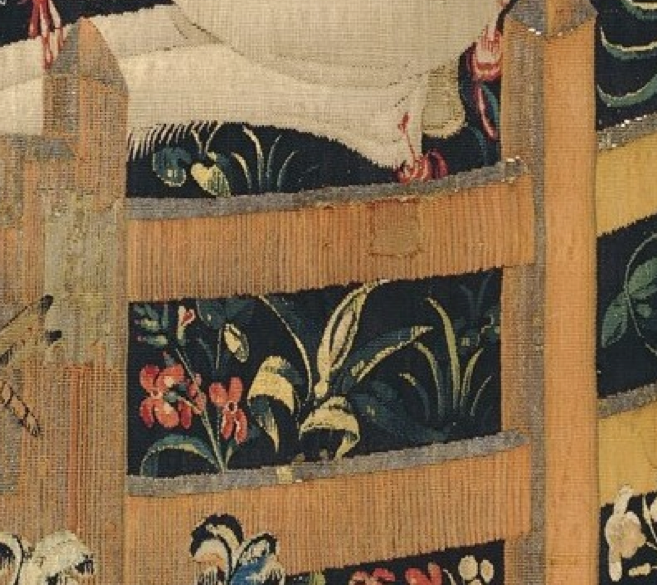unicorn tapestries
1495–1505: The Unicorn Tapestries produced. Arum depicted in the sixth tapestry.
31/08/13 /10:35 Category: Timeline

Quite possibly the most beautiful example of Arum appearing in art and one where Arum is depicted accurately as well as artistically, is in the last of the so-called ‘Unicorn Tapestries’. This series of seven tapestries represents one of the pinnacles of medieval art, each hanging measuring just under 4 x 3 metres, woven in wool and silk with silver and gold threads. Created between 1495 and 1505 in Brussels or the Netherlands, it is still a mystery why and for whom they were made or even whether they were originally intended to be hung together at all. It is known that for centuries they were in the possession of a French family by the name of La Rochefoucauld, who hung them in their family home in Bordeaux. In 1789, amidst the chaos of the French Revolution their chateau was ransacked and the tapestries stolen.
The family returned to their chateau in 1855 and made it known around the locality that they wanted the tapestries back and would pay for their return. No questions asked, presumably. Astonishingly, all of the tapestries were still in the hands of families of local farmers and the Rochefoucaulds regained possession of their wonderful hangings. Even more remarkably, it turned out that these incredible tapestries, at this point some 350 years old, had been used by the local farmers like old rags; for protecting piles of potatoes in barns and wrapping around fruit trees in spring to protect them from frost. For 65 years. Despite such unintended and seemingly abusive activities, the tapestries were still in good condition and generally had not suffered undue harm. The family hung them in their home once more until 1922, when they sold them to John Rockefeller for $1 million. After enjoying them in private for 15 years, he donated the tapestries to their current home.
The tapestries are today displayed in the Metropolitan Museum of Art (in New York) and depict the hunting and killing of a unicorn by a group of noblemen. The sixth tapestry shows the unicorn as dead; killed by the noblemen and brought back to the castle for the lord and lady. In keeping with Arum’s symbolic powers, however, the seventh and final tapestry depicts the unicorn as alive and well, seemingly resurrected but now contained by a fence and chained. It is, however, a very low fence and the chain is very loose; the implication being that if it wished to escape, it could do so. Many plants are depicted within the fence with the unicorn and Arum is one of these, very visible, in full fertile glory, beside the resting unicorn.
This particular tapestry (and Arum) also makes an appearance in the film Harry Potter and the Half-blood Prince, where it is seen covering the wall outside the ‘Room of Requirement’ with the character Malthoy standing before it. It is also glimpsed against the walls in various Harry Potter ‘house’ common rooms. A high-resolution image of the seventh tapestry depicting Arum can be seen on the Metropolitan Museum’s website at http://bit.ly/17ts7tu. The image above is a screen shot of a zoomed in portion, showing the Arum within the fence.
The main page for the museum’s section on the tapestry is here: http://bit.ly/OYQh6b
Read more on the iPad book here: http://tinyurl.com/wildarumipad
Comments